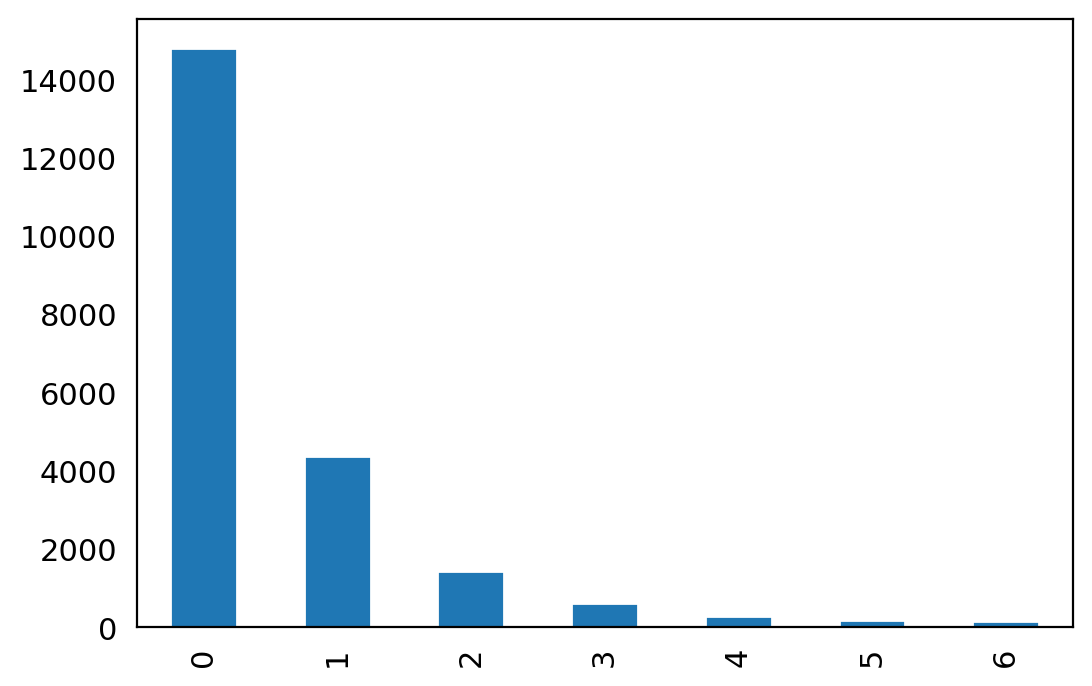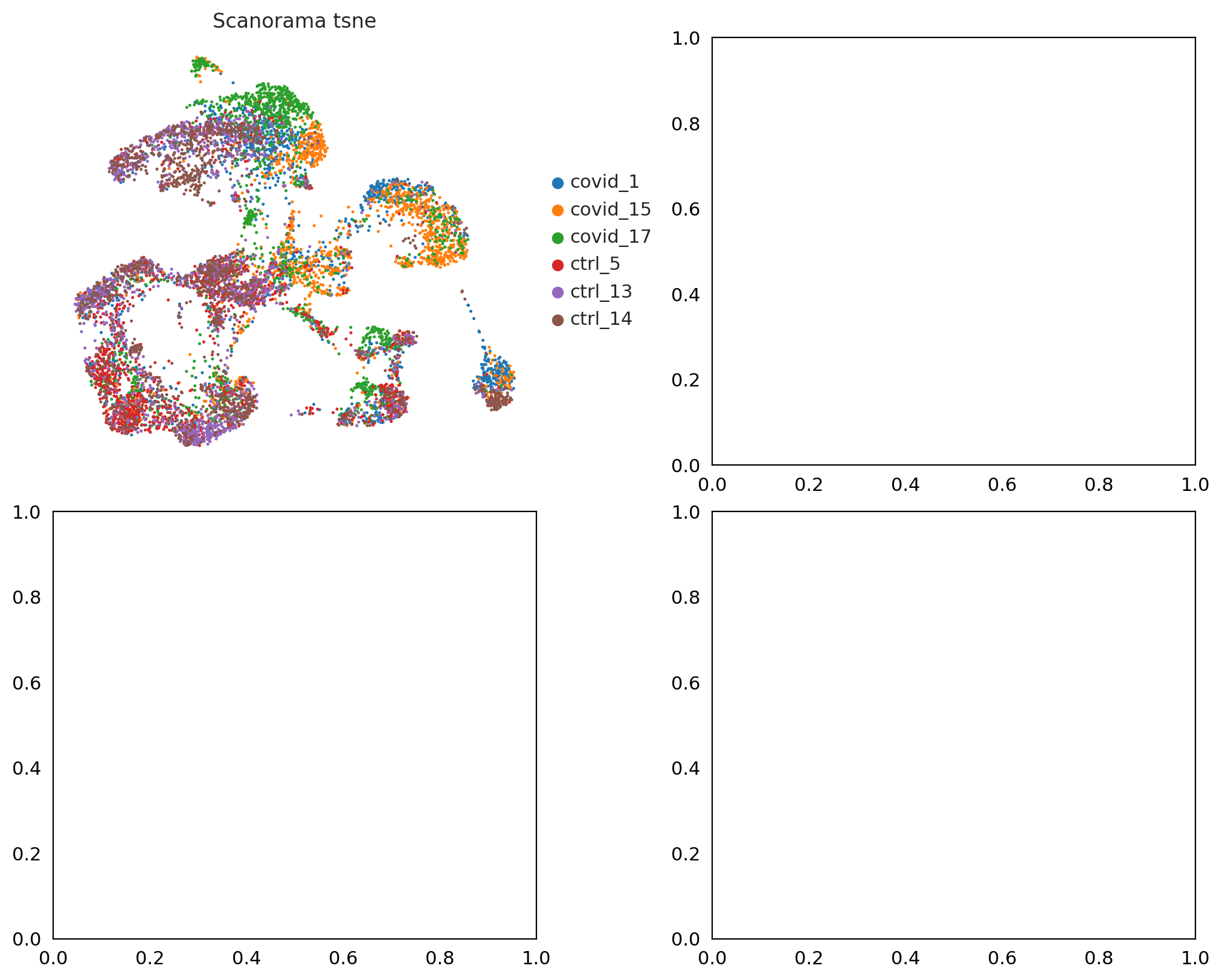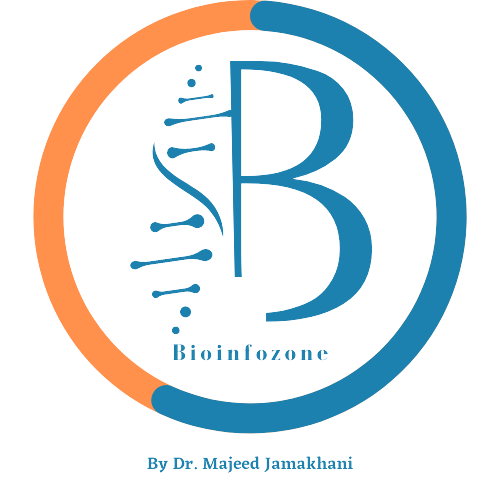Data Integration (Batch correction)#
Batch effects are changes in gene expression due to batches arise by different handling conditions such as , library depth, machines, Days, Stress management during extraction, even samples etc.
But selecting batch and label key is important . according to requirement of keeping batch
general, one can say that Harmony and Seurat consistently perform well for simple batch correction tasks, and scVI, scGen, scANVI, and Scanorama perform well for more complex data integration tasks.
Note
Previous Feature selection used Normalized , scaled data . But for Batch correction it is important to use RawData and find variable genes based on batch (Not on whole data)
It is important to use Rawdata
RawData as adata2
We also use Filted DM data as adata
Check Batch correction Needed ?#
#@title Load DM reduced filtered data:
adata_QCNFSDM = sc.read_h5ad("/content/drive/MyDrive/scRNA_using_Python/Objects/sc_QCNFSDM_covid.h5ad")
adata_QCNFSDM
AnnData object with n_obs × n_vars = 3536 × 7650
obs: 'type', 'sample', 'batch', 'n_genes_by_counts', 'total_counts', 'pct_counts_in_top_20_genes', 'total_counts_mt', 'pct_counts_mt', 'total_counts_ribo', 'pct_counts_ribo', 'total_counts_hb', 'pct_counts_hb', 'outlier', 'mt_outlier', 'n_counts', 'S_score', 'G2M_score', 'phase', '_scvi_batch', '_scvi_labels', 'prediction', 'leiden', 'doublet'
var: 'gene_ids', 'feature_types', 'genome', 'mt', 'ribo', 'hb', 'n_cells_by_counts', 'mean_counts', 'pct_dropout_by_counts', 'total_counts', 'n_cells', 'mean', 'std', 'highly_deviant', 'binomial_deviance', 'highly_variable'
uns: '_scvi_manager_uuid', '_scvi_uuid', 'ambient_profile_Gene Expression', 'ambient_profile_all', 'doublet_colors', 'leiden', 'leiden_colors', 'log1p', 'neighbors', 'pca', 'prediction_colors', 'sample_colors', 'tsne', 'type_colors', 'umap'
obsm: 'X_pca', 'X_tsne', 'X_umap'
varm: 'PCs'
layers: 'APR_counts', 'ambient_counts', 'counts', 'log1p_norm'
obsp: 'connectivities', 'distances'
#@title Load Raw Data :
adata_raw = sc.read_h5ad("/content/drive/MyDrive/scRNA_using_Python/Objects/adata_raw_covid.h5ad")
adata_raw.layers["counts"] = adata_raw.X
adata_raw
AnnData object with n_obs × n_vars = 9000 × 33538
obs: 'type', 'sample', 'batch'
var: 'gene_ids', 'feature_types', 'genome'
layers: 'counts'
adata_raw.obs
| type | sample | batch | |
|---|---|---|---|
| AGGGTCCCATGACCCG-1-0 | Covid | covid_1 | 0 |
| TACCCACAGCGGGTTA-1-0 | Covid | covid_1 | 0 |
| CCCAACTTCATATGGC-1-0 | Covid | covid_1 | 0 |
| TCAAGTGTCCGAACGC-1-0 | Covid | covid_1 | 0 |
| ATTCCTAGTGACTGTT-1-0 | Covid | covid_1 | 0 |
| ... | ... | ... | ... |
| CGCATAATCTTACGGA-14-5 | Ctrl | ctrl_14 | 5 |
| GAGGCCTTCTCCTGCA-14-5 | Ctrl | ctrl_14 | 5 |
| CCCTAACAGTTTCTTC-14-5 | Ctrl | ctrl_14 | 5 |
| GGGATGATCAAGCTTG-14-5 | Ctrl | ctrl_14 | 5 |
| CAATGACCACTGCATA-14-5 | Ctrl | ctrl_14 | 5 |
9000 rows × 3 columns
#@title Assign key for batch and label
label_key = "type"
batch_key = "sample"
adata_raw.obs[batch_key].value_counts()
covid_1 1500
covid_15 1500
covid_17 1500
ctrl_5 1500
ctrl_13 1500
ctrl_14 1500
Name: sample, dtype: int64
adata_raw.var["feature_types"].value_counts()
Gene Expression 33538
Name: feature_types, dtype: int64
#@title filtering to make sure we have no features with zero counts
sc.pp.filter_genes(adata_raw, min_cells=1)
adata_raw
AnnData object with n_obs × n_vars = 9000 × 21830
obs: 'type', 'sample', 'batch'
var: 'gene_ids', 'feature_types', 'genome', 'n_cells'
layers: 'counts'
we also need to re-normalise the data. Here we just normalise using global scaling by the total counts per cell.
#@title simple normalize log1p
adata_raw.X = adata_raw.layers["counts"].copy()
sc.pp.normalize_total(adata_raw)
sc.pp.log1p(adata_raw)
adata_raw.layers["logcounts"] = adata_raw.X.copy()
adata_raw
AnnData object with n_obs × n_vars = 9000 × 21830
obs: 'type', 'sample', 'batch'
var: 'gene_ids', 'feature_types', 'genome', 'n_cells'
uns: 'log1p'
layers: 'counts', 'logcounts'
sc.pp.highly_variable_genes(adata_raw)
sc.tl.pca(adata_raw)
sc.pp.neighbors(adata_raw)
sc.tl.umap(adata_raw)
adata_raw
AnnData object with n_obs × n_vars = 9000 × 21830
obs: 'type', 'sample', 'batch'
var: 'gene_ids', 'feature_types', 'genome', 'n_cells', 'highly_variable', 'means', 'dispersions', 'dispersions_norm'
uns: 'log1p', 'hvg', 'pca', 'neighbors', 'umap'
obsm: 'X_pca', 'X_umap'
varm: 'PCs'
layers: 'counts', 'logcounts'
obsp: 'distances', 'connectivities'
#@title Batch correction needed ?
adata_raw.uns[batch_key + "_colors"] = [
"#1b9e77",
"#d95f02",
"#7570b3",
] # Set custom colours for batches
sc.pl.umap(adata_raw, color=[label_key, batch_key], wspace=1)

We need batch correction according to sample batch
Batch Correction#
#@title Feature selection wrt Batch :
sc.pp.highly_variable_genes(
adata_raw, n_top_genes=2000, flavor="cell_ranger", batch_key=batch_key
)
adata_raw
adata_raw.var
| gene_ids | feature_types | genome | n_cells | highly_variable | means | dispersions | dispersions_norm | highly_variable_nbatches | highly_variable_intersection | |
|---|---|---|---|---|---|---|---|---|---|---|
| AL627309.1 | ENSG00000238009 | Gene Expression | GRCh38 | 25 | False | 0.001361 | 0.555600 | -0.151289 | 0 | False |
| AL627309.3 | ENSG00000239945 | Gene Expression | GRCh38 | 1 | False | 0.000041 | 0.061465 | -0.002369 | 0 | False |
| AL669831.5 | ENSG00000237491 | Gene Expression | GRCh38 | 461 | False | 0.026669 | 0.737217 | -0.089099 | 0 | False |
| FAM87B | ENSG00000177757 | Gene Expression | GRCh38 | 7 | False | 0.000366 | 0.368892 | 0.569010 | 1 | False |
| LINC00115 | ENSG00000225880 | Gene Expression | GRCh38 | 208 | False | 0.011747 | 0.654689 | -0.411236 | 0 | False |
| ... | ... | ... | ... | ... | ... | ... | ... | ... | ... | ... |
| AC007325.4 | ENSG00000278817 | Gene Expression | GRCh38 | 42 | False | 0.002123 | 0.618409 | -0.435802 | 0 | False |
| AL354822.1 | ENSG00000278384 | Gene Expression | GRCh38 | 43 | False | 0.003140 | 0.822280 | 1.033842 | 2 | False |
| AC004556.1 | ENSG00000276345 | Gene Expression | GRCh38 | 400 | False | 0.022188 | 0.670790 | 0.646585 | 1 | False |
| AC233755.1 | ENSG00000275063 | Gene Expression | GRCh38 | 4 | False | 0.000313 | 0.385842 | 0.627800 | 0 | False |
| AC240274.1 | ENSG00000271254 | Gene Expression | GRCh38 | 61 | False | 0.003973 | 0.839225 | 0.555512 | 1 | False |
21830 rows × 10 columns
highly_variable_nbatches - The number of batches where each gene was found to be highly variable
highly_variable_intersection - Whether each gene was highly variable in every batch
highly_variable - Whether each gene was selected as highly variable after combining the results from each batch
#@title No of Batches eaach gene
n_batches = adata_raw.var["highly_variable_nbatches"].value_counts()
ax = n_batches.plot(kind="bar")
n_batches
0 14794
1 4371
2 1440
3 618
4 286
5 175
6 146
Name: highly_variable_nbatches, dtype: int64

most genes are not highly variable.
#@title create object to use for Integration
adata_hvg = adata_raw[:, adata_raw.var["highly_variable"]].copy()
adata_hvg
AnnData object with n_obs × n_vars = 9000 × 2000
obs: 'type', 'sample', 'batch'
var: 'gene_ids', 'feature_types', 'genome', 'n_cells', 'highly_variable', 'means', 'dispersions', 'dispersions_norm', 'highly_variable_nbatches', 'highly_variable_intersection'
uns: 'log1p', 'hvg', 'pca', 'neighbors', 'umap', 'sample_colors', 'type_colors'
obsm: 'X_pca', 'X_umap'
varm: 'PCs'
layers: 'counts', 'logcounts'
obsp: 'distances', 'connectivities'
scvi Data integration (Batch correction)#
adata_scvi = adata_hvg.copy()
adata_scvi
AnnData object with n_obs × n_vars = 9000 × 2000
obs: 'type', 'sample', 'batch'
var: 'gene_ids', 'feature_types', 'genome', 'n_cells', 'highly_variable', 'means', 'dispersions', 'dispersions_norm', 'highly_variable_nbatches', 'highly_variable_intersection'
uns: 'log1p', 'hvg', 'pca', 'neighbors', 'umap', 'sample_colors', 'type_colors'
obsm: 'X_pca', 'X_umap'
varm: 'PCs'
layers: 'counts', 'logcounts'
obsp: 'distances', 'connectivities'
prepare our AnnData object. This step stores some information required by scVI such as which expression matrix to use and what the batch key is.
scvi.model.SCVI.setup_anndata(adata_scvi, layer="counts", batch_key=batch_key)
adata_scvi
AnnData object with n_obs × n_vars = 9000 × 2000
obs: 'type', 'sample', 'batch', '_scvi_batch', '_scvi_labels'
var: 'gene_ids', 'feature_types', 'genome', 'n_cells', 'highly_variable', 'means', 'dispersions', 'dispersions_norm', 'highly_variable_nbatches', 'highly_variable_intersection'
uns: 'log1p', 'hvg', 'pca', 'neighbors', 'umap', 'sample_colors', 'type_colors', '_scvi_uuid', '_scvi_manager_uuid'
obsm: 'X_pca', 'X_umap'
varm: 'PCs'
layers: 'counts', 'logcounts'
obsp: 'distances', 'connectivities'
model_scvi = scvi.model.SCVI(adata_scvi)
model_scvi
SCVI Model with the following params: n_hidden: 128, n_latent: 10, n_layers: 1, dropout_rate: 0.1, dispersion: gene, gene_likelihood: zinb, latent_distribution: normal Training status: Not Trained Model's adata is minified?: False
model_scvi.view_anndata_setup()
Anndata setup with scvi-tools version 0.20.3.
Setup via `SCVI.setup_anndata` with arguments:
{ │ 'layer': 'counts', │ 'batch_key': 'sample', │ 'labels_key': None, │ 'size_factor_key': None, │ 'categorical_covariate_keys': None, │ 'continuous_covariate_keys': None }
Summary Statistics ┏━━━━━━━━━━━━━━━━━━━━━━━━━━┳━━━━━━━┓ ┃ Summary Stat Key ┃ Value ┃ ┡━━━━━━━━━━━━━━━━━━━━━━━━━━╇━━━━━━━┩ │ n_batch │ 6 │ │ n_cells │ 9000 │ │ n_extra_categorical_covs │ 0 │ │ n_extra_continuous_covs │ 0 │ │ n_labels │ 1 │ │ n_vars │ 2000 │ └──────────────────────────┴───────┘
Data Registry ┏━━━━━━━━━━━━━━┳━━━━━━━━━━━━━━━━━━━━━━━━━━━┓ ┃ Registry Key ┃ scvi-tools Location ┃ ┡━━━━━━━━━━━━━━╇━━━━━━━━━━━━━━━━━━━━━━━━━━━┩ │ X │ adata.layers['counts'] │ │ batch │ adata.obs['_scvi_batch'] │ │ labels │ adata.obs['_scvi_labels'] │ └──────────────┴───────────────────────────┘
batch State Registry ┏━━━━━━━━━━━━━━━━━━━━━┳━━━━━━━━━━━━┳━━━━━━━━━━━━━━━━━━━━━┓ ┃ Source Location ┃ Categories ┃ scvi-tools Encoding ┃ ┡━━━━━━━━━━━━━━━━━━━━━╇━━━━━━━━━━━━╇━━━━━━━━━━━━━━━━━━━━━┩ │ adata.obs['sample'] │ covid_1 │ 0 │ │ │ covid_15 │ 1 │ │ │ covid_17 │ 2 │ │ │ ctrl_5 │ 3 │ │ │ ctrl_13 │ 4 │ │ │ ctrl_14 │ 5 │ └─────────────────────┴────────────┴─────────────────────┘
labels State Registry ┏━━━━━━━━━━━━━━━━━━━━━━━━━━━┳━━━━━━━━━━━━┳━━━━━━━━━━━━━━━━━━━━━┓ ┃ Source Location ┃ Categories ┃ scvi-tools Encoding ┃ ┡━━━━━━━━━━━━━━━━━━━━━━━━━━━╇━━━━━━━━━━━━╇━━━━━━━━━━━━━━━━━━━━━┩ │ adata.obs['_scvi_labels'] │ 0 │ 0 │ └───────────────────────────┴────────────┴─────────────────────┘
max_epochs_scvi = np.min([round((20000 / adata_scvi.n_obs) * 400), 400])
max_epochs_scvi
400
model_scvi.train()
INFO:pytorch_lightning.utilities.rank_zero:GPU available: True (cuda), used: True
INFO:pytorch_lightning.utilities.rank_zero:TPU available: False, using: 0 TPU cores
INFO:pytorch_lightning.utilities.rank_zero:IPU available: False, using: 0 IPUs
INFO:pytorch_lightning.utilities.rank_zero:HPU available: False, using: 0 HPUs
INFO:pytorch_lightning.accelerators.cuda:LOCAL_RANK: 0 - CUDA_VISIBLE_DEVICES: [0]
Epoch 400/400: 100%|██████████| 400/400 [04:31<00:00, 1.47it/s, loss=429, v_num=1]
INFO:pytorch_lightning.utilities.rank_zero:`Trainer.fit` stopped: `max_epochs=400` reached.
Epoch 400/400: 100%|██████████| 400/400 [04:31<00:00, 1.48it/s, loss=429, v_num=1]
adata_scvi.obsm["X_scVI"] = model_scvi.get_latent_representation()
adata_scvi
AnnData object with n_obs × n_vars = 9000 × 2000
obs: 'type', 'sample', 'batch', '_scvi_batch', '_scvi_labels'
var: 'gene_ids', 'feature_types', 'genome', 'n_cells', 'highly_variable', 'means', 'dispersions', 'dispersions_norm', 'highly_variable_nbatches', 'highly_variable_intersection'
uns: 'log1p', 'hvg', 'pca', 'neighbors', 'umap', 'sample_colors', 'type_colors', '_scvi_uuid', '_scvi_manager_uuid'
obsm: 'X_pca', 'X_umap', 'X_scVI'
varm: 'PCs'
layers: 'counts', 'logcounts'
obsp: 'distances', 'connectivities'
sc.pp.neighbors(adata_scvi, use_rep="X_scVI")
sc.tl.umap(adata_scvi)
adata_scvi
AnnData object with n_obs × n_vars = 9000 × 2000
obs: 'type', 'sample', 'batch', '_scvi_batch', '_scvi_labels'
var: 'gene_ids', 'feature_types', 'genome', 'n_cells', 'highly_variable', 'means', 'dispersions', 'dispersions_norm', 'highly_variable_nbatches', 'highly_variable_intersection'
uns: 'log1p', 'hvg', 'pca', 'neighbors', 'umap', 'sample_colors', 'type_colors', '_scvi_uuid', '_scvi_manager_uuid'
obsm: 'X_pca', 'X_umap', 'X_scVI'
varm: 'PCs'
layers: 'counts', 'logcounts'
obsp: 'distances', 'connectivities'
sc.pl.umap(adata_scvi, color=[label_key, batch_key], wspace=1)

Much Better . But we didn’t get corrected metrix
BBKNN Integration#
An important parameter for BBKNN is the number of neighbors per batch. A suggested heuristic for this is to use 25 if there are more than 100,000 cells or the default of 3 if there are fewer than 100,000.
neighbors_within_batch = 25 if adata_hvg.n_obs > 100000 else 3
neighbors_within_batch
3
adata_bbknn = adata_hvg.copy()
adata_bbknn.X = adata_bbknn.layers["logcounts"].copy()
sc.pp.pca(adata_bbknn)
bbknn.bbknn(
adata_bbknn, batch_key=batch_key, neighbors_within_batch=neighbors_within_batch
)
adata_bbknn
AnnData object with n_obs × n_vars = 9000 × 2000
obs: 'type', 'sample', 'batch'
var: 'gene_ids', 'feature_types', 'genome', 'n_cells', 'highly_variable', 'means', 'dispersions', 'dispersions_norm', 'highly_variable_nbatches', 'highly_variable_intersection'
uns: 'log1p', 'hvg', 'pca', 'neighbors', 'umap', 'sample_colors', 'type_colors'
obsm: 'X_pca', 'X_umap'
varm: 'PCs'
layers: 'counts', 'logcounts'
obsp: 'distances', 'connectivities'
sc.tl.umap(adata_bbknn)
sc.pl.umap(adata_bbknn, color=[label_key, batch_key], wspace=1)

Much Better
scanoama#
To run Scanorama, you need to install python-annoy (already included in conda environment) and scanorama with pip. We can run scanorama to get a corrected matrix with the correct function, or to just get the data projected onto a new common dimension with the function integrate. Or both with the correct_scanpy and setting return_dimred=True. For now, run with just integration.
First we need to create individual AnnData objects from each of the datasets.
adata_scanorama = adata_hvg.copy()
adata_scanorama
AnnData object with n_obs × n_vars = 9000 × 2000
obs: 'type', 'sample', 'batch'
var: 'gene_ids', 'feature_types', 'genome', 'n_cells', 'highly_variable', 'means', 'dispersions', 'dispersions_norm', 'highly_variable_nbatches', 'highly_variable_intersection'
uns: 'log1p', 'hvg', 'pca', 'neighbors', 'umap', 'sample_colors', 'type_colors'
obsm: 'X_pca', 'X_umap'
varm: 'PCs'
layers: 'counts', 'logcounts'
obsp: 'distances', 'connectivities'
# split per batch into new objects.
batches = adata_scanorama.obs['sample'].cat.categories.tolist()
alldata = {}
for batch in batches:
alldata[batch] = adata_scanorama[adata_scanorama.obs['sample'] == batch,]
alldata
{'covid_1': View of AnnData object with n_obs × n_vars = 1500 × 2000
obs: 'type', 'sample', 'batch'
var: 'gene_ids', 'feature_types', 'genome', 'n_cells', 'highly_variable', 'means', 'dispersions', 'dispersions_norm', 'highly_variable_nbatches', 'highly_variable_intersection'
uns: 'log1p', 'hvg', 'pca', 'neighbors', 'umap', 'sample_colors', 'type_colors'
obsm: 'X_pca', 'X_umap'
varm: 'PCs'
layers: 'counts', 'logcounts'
obsp: 'distances', 'connectivities',
'covid_15': View of AnnData object with n_obs × n_vars = 1500 × 2000
obs: 'type', 'sample', 'batch'
var: 'gene_ids', 'feature_types', 'genome', 'n_cells', 'highly_variable', 'means', 'dispersions', 'dispersions_norm', 'highly_variable_nbatches', 'highly_variable_intersection'
uns: 'log1p', 'hvg', 'pca', 'neighbors', 'umap', 'sample_colors', 'type_colors'
obsm: 'X_pca', 'X_umap'
varm: 'PCs'
layers: 'counts', 'logcounts'
obsp: 'distances', 'connectivities',
'covid_17': View of AnnData object with n_obs × n_vars = 1500 × 2000
obs: 'type', 'sample', 'batch'
var: 'gene_ids', 'feature_types', 'genome', 'n_cells', 'highly_variable', 'means', 'dispersions', 'dispersions_norm', 'highly_variable_nbatches', 'highly_variable_intersection'
uns: 'log1p', 'hvg', 'pca', 'neighbors', 'umap', 'sample_colors', 'type_colors'
obsm: 'X_pca', 'X_umap'
varm: 'PCs'
layers: 'counts', 'logcounts'
obsp: 'distances', 'connectivities',
'ctrl_5': View of AnnData object with n_obs × n_vars = 1500 × 2000
obs: 'type', 'sample', 'batch'
var: 'gene_ids', 'feature_types', 'genome', 'n_cells', 'highly_variable', 'means', 'dispersions', 'dispersions_norm', 'highly_variable_nbatches', 'highly_variable_intersection'
uns: 'log1p', 'hvg', 'pca', 'neighbors', 'umap', 'sample_colors', 'type_colors'
obsm: 'X_pca', 'X_umap'
varm: 'PCs'
layers: 'counts', 'logcounts'
obsp: 'distances', 'connectivities',
'ctrl_13': View of AnnData object with n_obs × n_vars = 1500 × 2000
obs: 'type', 'sample', 'batch'
var: 'gene_ids', 'feature_types', 'genome', 'n_cells', 'highly_variable', 'means', 'dispersions', 'dispersions_norm', 'highly_variable_nbatches', 'highly_variable_intersection'
uns: 'log1p', 'hvg', 'pca', 'neighbors', 'umap', 'sample_colors', 'type_colors'
obsm: 'X_pca', 'X_umap'
varm: 'PCs'
layers: 'counts', 'logcounts'
obsp: 'distances', 'connectivities',
'ctrl_14': View of AnnData object with n_obs × n_vars = 1500 × 2000
obs: 'type', 'sample', 'batch'
var: 'gene_ids', 'feature_types', 'genome', 'n_cells', 'highly_variable', 'means', 'dispersions', 'dispersions_norm', 'highly_variable_nbatches', 'highly_variable_intersection'
uns: 'log1p', 'hvg', 'pca', 'neighbors', 'umap', 'sample_colors', 'type_colors'
obsm: 'X_pca', 'X_umap'
varm: 'PCs'
layers: 'counts', 'logcounts'
obsp: 'distances', 'connectivities'}
adata_scanorama.var['highly_variable_nbatches']
var_select = adata_scanorama.var['highly_variable_nbatches'] > 2
var_genes = var_select.index[var_select]
len(var_genes)
1225
#subset the individual dataset to the variable genes we defined at the beginning
alldata2 = dict()
for ds in alldata.keys():
print(ds)
alldata2[ds] = alldata[ds][:,var_genes]
#convert to list of AnnData objects
adatas = list(alldata2.values())
# run scanorama.integrate
scanorama.integrate_scanpy(adatas, dimred = 50)
covid_1
covid_15
covid_17
ctrl_5
ctrl_13
ctrl_14
Found 1225 genes among all datasets
[[0. 0.606 0.34933333 0.53266667 0.38866667 0.25733333]
[0. 0. 0.63866667 0.478 0.26133333 0.19266667]
[0. 0. 0. 0.52266667 0.20933333 0.20733333]
[0. 0. 0. 0. 0.84133333 0.76466667]
[0. 0. 0. 0. 0. 0.84133333]
[0. 0. 0. 0. 0. 0. ]]
Processing datasets (4, 5)
Processing datasets (3, 4)
Processing datasets (3, 5)
Processing datasets (1, 2)
Processing datasets (0, 1)
Processing datasets (0, 3)
Processing datasets (2, 3)
Processing datasets (1, 3)
Processing datasets (0, 4)
Processing datasets (0, 2)
Processing datasets (1, 4)
Processing datasets (0, 5)
Processing datasets (2, 4)
Processing datasets (2, 5)
Processing datasets (1, 5)
#scanorama adds the corrected matrix to adata.obsm in each of the datasets in adatas.
adatas[0].obsm['X_scanorama'].shape
(1500, 50)
# Get all the integrated matrices.
scanorama_int = [ad.obsm['X_scanorama'] for ad in adatas]
# make into one matrix.
all_s = np.concatenate(scanorama_int)
print(all_s.shape)
# add to the AnnData object, create a new object first
adata_sc = adata_scanorama.copy()
adata_sc.obsm["Scanorama"] = all_s
(9000, 50)
adata_sc
AnnData object with n_obs × n_vars = 9000 × 2000
obs: 'type', 'sample', 'batch'
var: 'gene_ids', 'feature_types', 'genome', 'n_cells', 'highly_variable', 'means', 'dispersions', 'dispersions_norm', 'highly_variable_nbatches', 'highly_variable_intersection'
uns: 'log1p', 'hvg', 'pca', 'neighbors', 'umap', 'sample_colors', 'type_colors'
obsm: 'X_pca', 'X_umap', 'Scanorama'
varm: 'PCs'
layers: 'counts', 'logcounts'
obsp: 'distances', 'connectivities'
# tsne and umap
sc.pp.neighbors(adata_sc, n_pcs =30, use_rep = "Scanorama")
sc.tl.umap(adata_sc)
sc.tl.tsne(adata_sc, n_pcs = 30, use_rep = "Scanorama")
fig, axs = plt.subplots(2, 2, figsize=(10,8),constrained_layout=True)
sc.pl.umap(adata_sc, color="sample", title="Scanorama tsne", ax=axs[0,0], show=False)
<Axes: title={'center': 'Scanorama tsne'}, xlabel='UMAP1', ylabel='UMAP2'>

#@title save scanroma integrated data to file
save_file = 'Objects/sc_QCNFSDM_scanorama_corrected_covid.h5ad'
adata_sc.write_h5ad(save_file)
